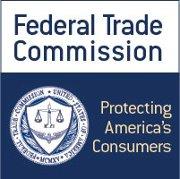
Big Data: A Tool for Inclusion or Exclusion?
Constitution Center 400 7th St SW, Washington, DC 20024 | Directions & Nearby
Conference Description
The Federal Trade Commission will host a public workshop entitled “Big Data: A Tool for Inclusion or Exclusion?” in Washington on September 15, 2014, to further explore the use of “big data” and its impact on American consumers, including low income and underserved consumers.
“A growing number of companies are increasingly using big data analytics techniques to categorize consumers and make predictions about their behavior,” said FTC Chairwoman Edith Ramirez. “As part of the FTC’s ongoing work to shed light on the full scope of big data practices, our workshop will examine the potentially positive and negative effects of big data on low income and underserved populations.”
The proliferation of smartphones, social networks, cloud computing, and more powerful predictive analytic techniques have enabled the collection, analysis, use, and storage of data in a way that was not possible just a few years ago. Tremendous benefits flow from the insights of big data, such as advances in medicine, education, and transportation, improved product offerings, more efficient manufacturing processes, and more effectively tailored advertisements. At the same time, concerns have been raised about whether big data may be used to categorize consumers in ways that may affect them unfairly, or even unlawfully.
Companies such as financial institutions, online and brick and mortar retailers, lead generators, and service providers may use big data in the following ways:
- To reward loyal customers with better customer service or shorter wait times.
- To offer different prices or discounts to different consumers. For example, a financial institution may offer a consumer a discounted mortgage rate if that consumer has a checking, savings, credit card, and retirement account with a competitor.
- To tailor advertising for financial products. For example, high-income consumers may receive offers for “gold level” credit cards and low-income consumers may receive offers for subprime credit cards.
- To assess credit risks of particular populations. For example, some commentators have highlighted the use of unregulated “aggregate scoring models” that assess credit risks, not based on the credit characteristics of individual consumers, but on the aggregate credit characteristics of groups of consumers who shop at certain stores.
Such uses of big data are expected to create efficiencies, lower costs, and improve the ability of certain populations to find and access credit and other services. At the same time, these practices may have an unfair impact on other populations, limiting their access to higher quality products, services, or content.
The workshop will address the following issues:
- How are organizations using big data to categorize consumers?
- What benefits do consumers gain from these practices? Do these practices raise consumer protection concerns?
- What benefits do organizations gain from these practices? What are the social and economic impacts, both positive and negative, from the use of big data to categorize consumers?
- How do existing laws apply to such practices? Are there gaps in the legal framework?
- Are companies appropriately assessing the impact of big data practices on low income and underserved populations? Should additional measures be considered?
The workshop will bring together academics, business and industry representatives, and consumer advocates and will be open to the public.
